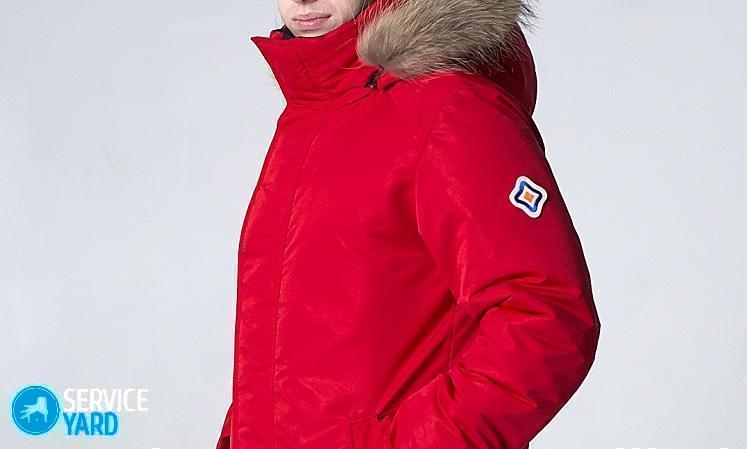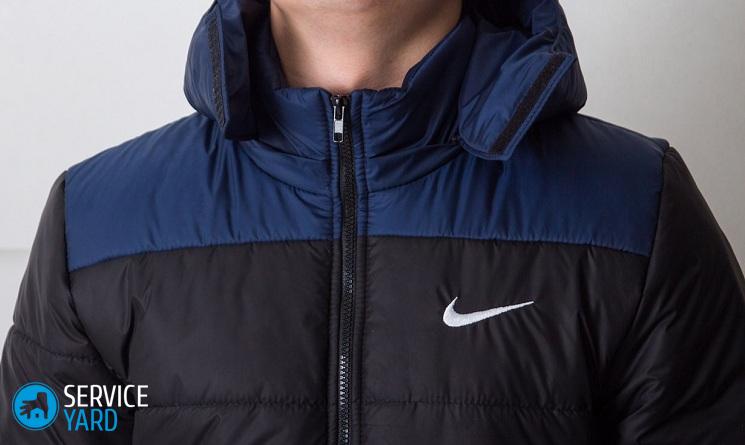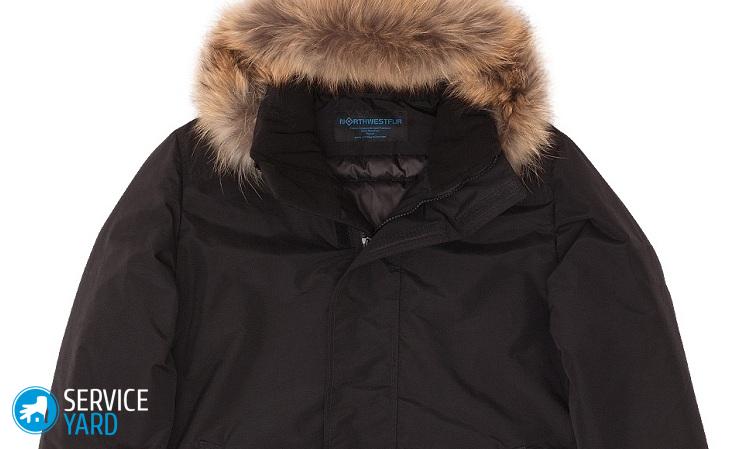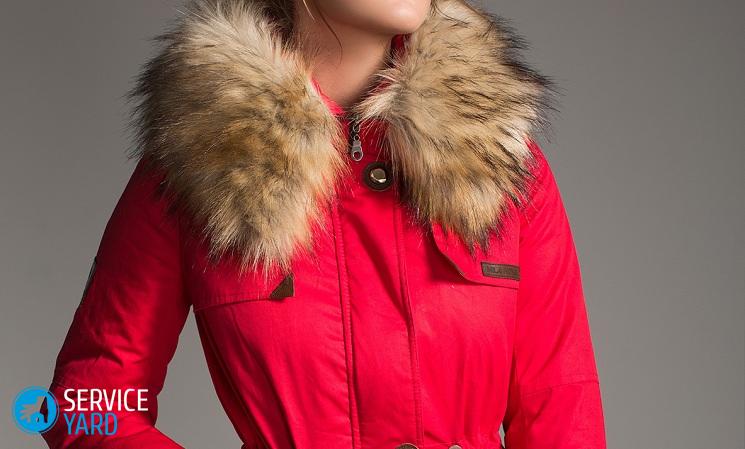What insulation is best for a winter jacket?
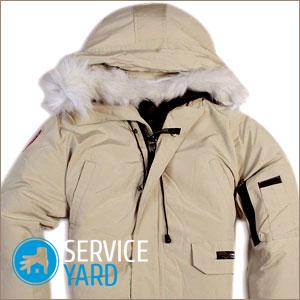
Practical, warm, lightweight down jacket - perfect winter clothes. This was first appreciated by tourists and climbers who, in the middle of the last century, wore down jackets on their hikes, sewn with their own hands from the strangest, at first glance, materials. Clothing manufacturers quickly got their bearings, and now offer a great variety of models to customers of all ages and social backgrounds. What insulation is best for a winter jacket, polyester or down? This will be discussed in our article.
to contents ↑Natural or artificial. Composition and characteristics
Which filler is better and what should be the density of the filler, for both women's and men's outerwear? Choose a down jacket should start with the filler. To the question, insulation for a jacket - which is better, the answer follows quite often - of course, natural. Is it always like this? Natural fluff has, of course, a lot of positive qualities:
- ability to retain heat well;
- ease.
Yes, but artificial materials for filling down jackets differ in these same qualities! Moreover, sometimes they are even lighter than natural ones, and they retain heat better - at least some.
Cons of natural fluff
The main disadvantage of natural fillers is the price, as usually women choose such a filler. Down jackets on eider or swan fluff are sometimes very expensive. In addition, there are other disadvantages:
- difficulty in washing;
- the need to use waterproof materials for the top and lining;
- ability to cause allergies.
Talk about washing
An insulated jacket for winter is the best option, but how to wash such a jacket? A down jacket with a natural filler is very difficult to wash in a washing machine:
- The fluff has the ability to stray and penetrate through holes in the seams, which negatively affects the performance of your unit.
- If the fabrics from which the top and lining are sewn are not very high quality, the fluff is also knocked out through holes in the weaves.
Important! Before you turn on the machine, you need to put a jacket or coat in a special bag - then there will be much less harm from down.
After the jacket is washed, you have to lay it on a horizontal surface. If you try to dry it on a rope or even on shoulders, the entire filler will be at the bottom or in the corners. This, of course, is not a problem that will ruin your life forever. But after the product dries, you have to evenly distribute what is inside it, and slurp your favorite thing with the most common carpet knocker. Sometimes it is necessary to do this between washings. Therefore, down jackets with a natural filler are most often made quilted. But with artificial material nothing like this will not have to do.
to contents ↑Important! For expensive models, the natural fluff is in special bags, it does not get off so intensely, but you still have to dry it on the floor and slam the products.
Which fluff is better?
You were not afraid of the upcoming difficulties with washing and yet decided to buy a jacket with natural down? Well. Here in front of you are down jacket fillers - which is better: duck, goose or some other?
Important! As a rule, clothing manufacturers use fluff of waterfowl, since it does not rot from moisture.But in some cheap Chinese models, chicken may also appear, and this should be discarded right away - such a down jacket will serve exactly until the moment you fall into the cold winter rain. Especially if the top is made of not very high-quality fabric, the manufacturer, allowing himself to use such a filler, obviously does not care about quality, or offers you not street, but home clothes.
Drying the jacket completely will not be easy. Much better fluff:
- Gag. Eiderdown - the highest quality, but also the most expensive. Products with such a filler are very warm and very light.
- The swan. Swan is also of high quality. Perhaps it retains heat a little worse, but is equally light and soft.
Important! If you live in areas where there are very severe frosts in winter, it is better to choose one of these two options.
- Goose and ducks. Jackets with duck and goose down are somewhat cheaper. They are heavier and a little tougher, but quite warm and well suited for not particularly cold winters (for example, in regions with a mild marine climate). Northerners, who can not afford a jacket for eider down, and are forced to be content with ducks, usually sew two-layer down jackets.
to contents ↑Important! Those who prefer natural materials, it is better to opt for down-feather filler - it will last longer.
Synthetic fillers
Modern synthetic materials make it possible even for people with a modest budget to dress beautifully, comfortably and modernly. This also applies to down jackets.
Artificial fillers sometimes surpass natural ones in their qualities:
- they can better retain heat;
- some of them allow you to feel comfortable, even if a thaw unexpectedly sets in after a morning frost;
- they are easy to wash and dry;
- many of them do not stray over time, so there is no need to slam clothing;
- Among artificial fillers, there are those that can last for decades.
So, if you are looking for an answer to the question, insulation for a winter coat - which is better, be sure to pay attention to synthetic materials. It could be:
- synthetic winterizer;
- sintepuh;
- isosoft;
- holofiber;
- tinsulate.
New materials appear every year, so do not be surprised if you see any other name on the label. But for now, these remain the most popular.
Synthetic winterizer
The cheapest and still very fashionable filler. Of course, in recent years, other materials have pretty much replaced him, but he has a lot of advantages:
- ease;
- hypoallergenicity;
- ability to retain heat well;
- ability to dry quickly after getting wet or washing;
- does not absorb moisture;
- can be washed in any way, including in a machine;
- can be dried in any position.
Important! Jackets on synthetic winterizer weigh almost nothing. This material is absolutely inert, that is, it does not react with the environment, which means it does not emit harmful substances and does not cause allergies. To wash such a thing is a pleasure: no delicate wash it’s not needed, any detergents can be used, and you can even dry it on a battery - the shape will not change.
There are, however, a couple of very significant shortcomings, due to which this material is gradually coming out of use:
- after washing, the jacket will be slightly blown away:
- after prolonged wear or several washings, even a sheet sintepon, which is usually used, will get lumpy.
Important! A quilted product with a synthetic winterizer filler is much more reliable: the material does not slip into lumps and does not lose volume.
Isosoft
This is a membrane insulation invented in Europe. It was proposed by Libeltex, and usually it is found in the clothes of this brand. The undoubted advantages include:
- very small mass;
- almost complete lack of moisture absorption:
- superior thermal performance:
- the ability to wash in any convenient way;
- durability.
Important! Isosoft is lighter than sintepon, and even more so - natural fluff.It perfectly repels moisture, so the jacket will not get wet even in very heavy rain. For the first time wearing a thin jacket with this filler, you will be very pleasantly surprised - even in severe frost it will not be cold. You can wash the product as you like - manually, in an automatic machine and even in an activator unit without any additional protection. The jacket will dry very quickly and in any position.
In addition, isosoft:
- does not lose shape;
- does not lose volume;
- not lumpy.
Important! This perfection has only one drawback - it costs almost as much as a down jacket for eiderdown from a good manufacturer.
Hollofiber
Soft and light material stuffed with toys, mattresses and clothes. Perhaps, for the Nordic countries - an ideal option, a very reasonable combination of price and quality. If we talk about the pros, they are as follows:
- light weight (heavier than isosoft, but inconsequential);
- does not cause allergies;
- does not absorb water;
- does not lose volume when washing and getting wet;
- It is inexpensive;
- found in many models.
Important! However, some users believe that this material does not pass air well enough. But this is claimed only by those who wore jackets and coats, in which the fabrics of the top and lining do not let air in either. Those who wear models made of “breathing” materials do not have this problem.
Thinsulate
Siliconized polyester, the fibers of which are twisted in a spiral and surrounded by air. They are very thin, about 60 times thinner than a human hair. This material was intended for astronauts, but is widely used in ordinary clothes. Its advantages:
- the warmest;
- the thinnest;
- the easiest;
- easily erased;
- does not stray into lumps;
- dries very quickly;
- does not react with the environment;
- does not cause allergies;
- does not absorb odors.
There is no perfection in the world, so the tinsuleit has its drawbacks:
- price;
- the body can overheat even in frost;
- static charge builds up.
Important! Ideal for regions with very harsh winters. True, it costs a lot, but it will also serve for many years, despite the fact that it can be washed at least every day - it will not lose its shape and volume.
Sintepuh
As the name implies, this filler is similar in structure to fluff, and in properties - to synthetic fillers. This is really fluff, that is, bulk density, but consists of artificial fibers. The fibers spring, intertwine, as a result, a rather dense structure is formed, which provides good thermal insulation.
Important! So that the fibers do not cling to each other and do not pile up, they are treated with silicone.
The advantages of this material are not less than those of others:
- not able to react with the environment;
- does not emit allergens;
- does not absorb dust;
- does not hold smells;
- differs in the increased wear resistance;
- not affected by fungus;
- possesses antiseptic properties;
- passes air;
- perfectly erased:
- dries easily.
Choose a down jacket
What to look for in a store other than filler? There are several more parameters that must be taken into account:
- the weight;
- filler distribution;
- availability of special packages:
- quilted or not;
- top and lining fabric.
Weight and technology
In order for the down jacket to be warm, it is necessary that it weighs no more than 600 g. This allows you to maintain volume, which means to provide good thermal insulation:
- See how evenly the filler is distributed. There should be no lumps or bruises.
- The presence of packages is determined only by touch. If the jacket is not quilted, you can easily move the fluff or what replaces it inside the bag - but no further.
- In addition, he should not be pricked.
Standard
When choosing natural fluff, do not forget to find out about the standard according to which it was processed. The label must bear DIN EN 12934. This means that the fluff has gone through all the steps:
- soaking;
- flushing;
- drying;
- filtering
- sterilization.
Important! Only in this case, a jacket with natural down will be worn for a long time. Do not forget to smell the product - it should smell like any new thing, without impurities of mustiness and rot.
Stitches
Cheap models are made quilted, that is, stitched in squares or horizontal stripes. Sometimes expensive down jackets look the same. The difference is determined by touch - yes, we are talking about the very bags that are in high-quality products and are not in low-quality ones.
Important! In any case, pay attention to the seams. They should be smooth, beautiful, without tears and protruding threads. In a cheap quilted down jacket, the filler is located directly under the top material.
The manufacturing technology is simple:
- When sewing, the top and the inside are quilted together in parallel lines, vertical or horizontal.
- Then pockets are filled with down.
- After that, they quilted again, but perpendicular to the already existing lines - about the same as quilts are sewn.
Unfortunately, with this technology, the fluff quickly collapses - at first “cold spots” are formed, then all the filler is in the corners. Bags made of special fabric, which are used in more expensive models, allow the natural filler to stay in shape longer. At the same time, the product itself looks like an ordinary coat or jacket, without additional seams.
Important! Do not forget to check if the fluff comes out through the holes in the seams. To do this, it is enough to bend the product at the seam and see if there is such a defect, it will certainly appear.
the cloth
This is a very important point. Natural fabrics for the manufacture of this type of clothing, as a rule, are not used. You may meet:
- synthetic;
- mixed.
When asked which option is better, there is no definite answer. The presence of natural fibers in mixed fabrics slightly increase the heat-shielding properties. But among the synthetic materials there are ones that do not let moisture in, but at the same time “breathe”, and this is the best option for winter clothes.
to contents ↑Stock footage
As you can see, choosing a really high-quality down jacket that will not lose its properties and beauty after one or another season is not so easy. To do this, you need to not only understand what insulation is best for a winter jacket, but also pay attention to other nuances of making things. And which ones you now know, therefore, you can easily cope with the task of buying a new warm thing. Good luck
- How to choose a vacuum cleaner taking into account the characteristics of the house and coatings?
- What to look for when choosing a water delivery
- How to quickly create comfort at home - tips for housewives
- How to choose the perfect TV - useful tips
- What to look for when choosing blinds
- What should be running shoes?
- What useful things can you buy in a hardware store
- Iphone 11 pro max review
- Than iPhone is better than Android smartphones



